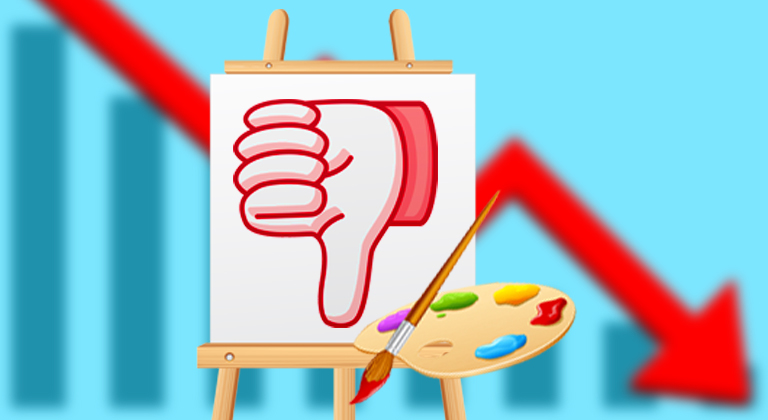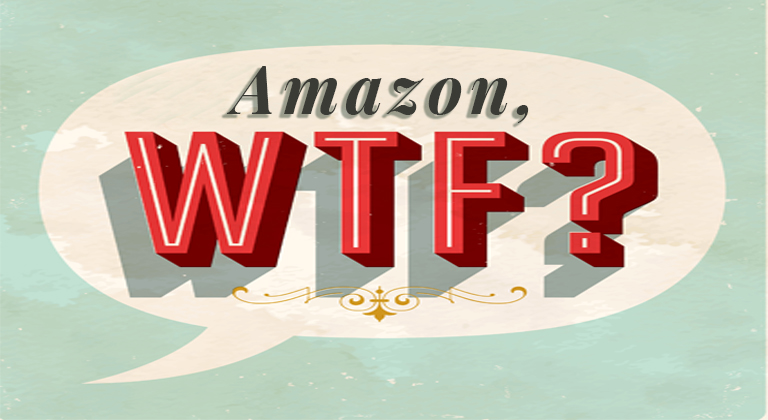How Bad Ad Creative Can Hurt Your Sales
When it comes to book marketing, your ad creative—images, headlines, and taglines—plays a critical role in the success of your campaigns. Even the best advertising strategy can fail if the creative doesn’t resonate with your audience. Ads are often the first impression of your book for potential readers, and if that impression falls flat, no amount of targeting or budgeting can make up for it. Poor ad creative doesn’t just hurt your clicks, it can actively drive up your advertising costs.
That’s why this week, Ginger is laying out exactly how the quality of your ad creative can make or break your book’s marketing efforts, and the strategies you can use to identify what works and what doesn’t. More importantly, he also shares some practical tips for creating engaging, high-performing ads that not only drive traffic but also connect with your readers.
A few weeks ago I wrote a post answering the question: “Does Running More Facebook Ads Produce Better Results?” Overall, the answer is mostly yes – but that’s not always the case, and I had a couple of emails asking for a little more clarification about how the number of ads you have in a Facebook campaign can impact the overall profitability of your advertising.
The important thing to remember when running any form of advertising is that you’re dealing with people, not numbers. It’s very easy to get lost in a flow of “impressions”, “clicks” and other metrics – but in reality, every time your ad gets shown to somebody, you’re actually interacting with a living, breathing human being.
And your ability to create ads that get this person to click on them is paramount. You can run all the advertisements you want (and Facebook will happily charge you for them) but none of them mean anything unless they drive potential readers through to your product page or website.
And that’s where running a large number of ads can make or break you. In general, it’s good practice to run many different variations of your ads – to hit potential readers with the “seven touches” that advertising lore suggests will get them to buy your product.
However, if your ad creative (the visual and textual elements of your advertisment) isn’t good, you might not just lose out on clicks and traffic from them. They might pull down the profitability of your advertising as a whole.
What constitutes a “good” ad?
At the end of the day, a good ad is one that gets people to click on it. If you have a really effective and engaging ad, many people will click on it – meaning you’ll pay less for all that traffic overall.
If your ad creative is less engaging, fewer people will click on it – and you’ll pay more for every one of them that do.
This metric is called the “click through rate” and is one of the most important in all of advertising. It’s determined by cross-referencing the number of people who see your ad (impressions) with the number of people who click on it (clicks) to determine a percentage of people who “click through.”
For example, if you posted an ad on Facebook and you got 100 impressions, and five of those impressions led to people clicking on it, you’d have a Click Through Rate (CTR) of 5%.
It’s a little more complicated than I’m about to explain it, but generally the higher your Click Through Rate, the less you’ll have to pay per click. This is because Facebook calculates the value of your audience using a metric called CPM or Cost Per Thousand impressions (it’s called CPM because Mille is the Latin word for thousand.) Very loosely (it truly is a lot more complicated than this, but it’s a reasonable enough example to get my point across) if you’re paying $0.25 a click on your ads that score a Click Through Rate of 5%, you’d end up paying $0.50 a click on ads that only score a 2.5% Click Through Rate.
(Feel free to go to town on me in the comments if you don’t like the way I’ve explained this.)
In simpler terms, the lower your CTR, the more you pay for advertising – so somebody running ads that score a 2.5% CTR might theoretically end up paying double the money as somebody with ads that have a 5% CTR for exactly the same number of clicks.
Obviously comparing one ad against another demonstrates this clearly, but when you’re running multiple ads (like I suggested in my article) it might not be so obvious. It’s easy to look at the average results from all your advertisements combined and think that your combined Click Through Rate is acceptable – but if you check the statistics for each of the individual ads you run, you might find that your overall CTR could be a lot higher if it wasn’t for one or two low-performing ads dragging that overall average down.
For example, I recently concluded an advertising campaign that had 13 different ads with a range of CTR from a powerful 16.67% to a less-than-impressive 1.33%. Overall, my CTR was 6.4% which isn’t horrible, by any means.
But if I cut out all the ads that got a CTR lower than 5%? Then my average CTR became 7.48% instead – and while an extra percentage point might not seem like much, it means my overall advertising budget is suddenly working nearly 15% harder.
So while it’s important and valuable to have many different ads running for your books, it’s only really worth it if they’re good ads. The more of them you have with a higher CTR, the higher your advertising budget is going to work for you.
What metrics prove an ad is good?
Okay, so now you know that the key metric you need to look for when determining whether or not an ad is “good” is your Click Through Rate – but what is a good Click Through Rate, and how can you make ads that consistently deliver a good CTR?
Well, the answer to that first question is fairly subjective. In general, I’d argue that anything over a 5% CTR proves that your ad works – but how well you want it to work is up to you.
If you’re running a bunch of ads and 5% is at the lower end of the performance scale, you could increase the profitability of your campaign by ditching those ads and sticking to the ones that perform better. However, if 5% is on the higher end of your CTR scale, you’d obviously want to keep those ads running and potentially ditch anything that doesn’t perform as well.
I normally have a rule similar to the way I play Blackjack – I just skip drinking three martinis beforehand. When I’m playing Blackjack I’ll “stand” when my cards add up to 17, because the law of averages leans in my favor. Likewise, I’ve learned that I’ll usually make a profit on my ads if my CTR is above 5% and my Cost Per Click is $0.25 or lower, so I’ll keep ads running as long as they hit that metric.
Just what that metric for success is for you depends on a bunch of factors, including the cost of your book and how many “conversions” you get from your advertising. For example I created my rule because I’ll normally sell one book for every 12 clicks. Therefore, if my book is priced at $3.99, I can be confident I’m making a profit as long as those twelve clicks don’t cost more than $0.25 each. Your calculation might vary – but how exactly you come up with the rule is less important than sticking to it.
What makes a good ad?
Okay, so now you’ve got an idea of how to judge whether or not your CTR is acceptable – how do you consistently create ads that deliver on that metric?
Well, that’s the tricky part – especially when you’re just starting out. Just as I wrote and published 11 full-length books before I finally published my first best-seller, you might have to publish a lot of ads that don’t perform before you find the ones that do.
When you’re starting out, you might have all sorts of cool ideas for the images, taglines, headlines and descriptions that make up your ad creative. You should test them all! But it’s only after you’ve shown them to enough people that you’ll be able to look at the metrics and determine whether or not your potential readers thought your ideas were as good as you did.
After running my campaigns for a while, I’ll always take a pause to compare my ads against each other with CTR as the main metric. As long as they’ve each got a fairly comparable number of impressions (anything over 300 should give a fairly accurate result) you can determine how their CTR stacks up against your other ads.
This will invariably mean that you’ll discover a lot of your advertising ideas don’t resonate with your audience. For example, I used to run ads for my romantic suspense books with female characters front-and-center and they never produced results that matched all the pictures I posted of burly, shirtless men.
However, once you’ve found a couple examples that do perform well, they can give you some good ideas about what type of ad creative resonates with your potential readers. For example, my high-performing ads with all those shirtless men? I started to produce more of them.
Once you’ve found ideas that deliver a higher CTR, you should try various riffs and spins on the ad creative that made them up to see if you can catch lightning in a bottle more often. Also, don’t be afraid to switch images and graphics around to see if one combo works better than another. In fact, I’ve got a huge spreadsheet in which I’ve listed the best-performing headlines, taglines, and images so I can chop-and-change them constantly. This helps you build a repository of ad creative that you know will consistently deliver.
It’s one of the frustrating, but rewarding things about advertising. In general, you’ll have to spend a lot of money finding out what doesn’t work before you figure out what does. The only people who can definitively tell you which elements make effective advertisements are your potential readers – and invariably you’ll have to pay to show your ads to them.
But the longer you keep at this, the more consistently you’ll be able to create ads that do deliver a high CTR and help make your advertising profitable – and even if you spend months figuring that out, you’ll make your money back in the years that follow.
Optimizing Your Advertising
I’ve written before about how the old-school lessons and wisdom regarding advertising is still relevant even in our era of ecommerce. A lot of your advertising might not instantly score clicks and sales, but it does build brand awareness and work towards those “seven touches” that will turn an interested reader into a paying customer.
However, having access to information like the Click Through Rate gives us a better indication of how well our ad creative aligns with the expectations of our potential readers, and it’s invaluable when trying to determine what sort of advertising to create next. It’s also a valuable measure in helping optimize our advertising campaigns in general – inching up the average CTR of all our ads by ditching the ones that don’t perform as well as we’d like.
Even more than that, keeping an eye on how effectively our ads perform can also help give us more of an idea about what our audience is looking for in the books they read.
On a lot of occasions, the taglines and headlines that have performed best in my advertising have gone on to inspire plotlines, stories, and characters in my books – making not just my advertising work better, but improving the effectiveness of my writing as a whole.












I’m not sure where you’re running your ads, but I’ve been told that my CTR should be at least 1.1% on Amazon. I mat this rate, I’m able to pay around 1$ or so per download. 5% seems ridiculously high. Ad managers who run ads on Amazon agree that a CTR of 1.1% or higher is where you need to be.
Hi Rory! I’m sorry, I should have been clearer in my article – the target 5% CTR is only for Facebook ads. You’re absolutely right when talking about Amazon ads – a 5% CTR would be practically unbelievable and I don’t think that’s an achievable target for most authors!